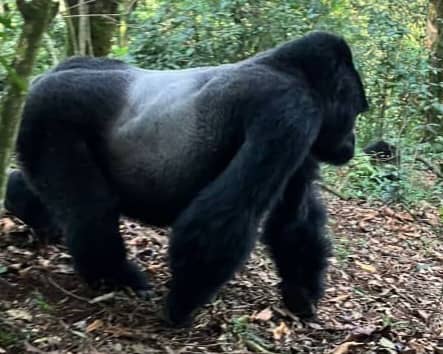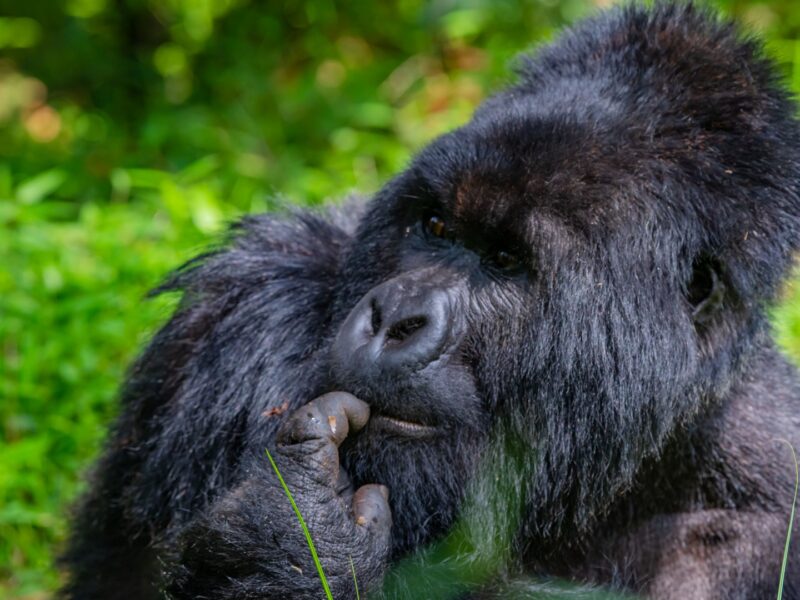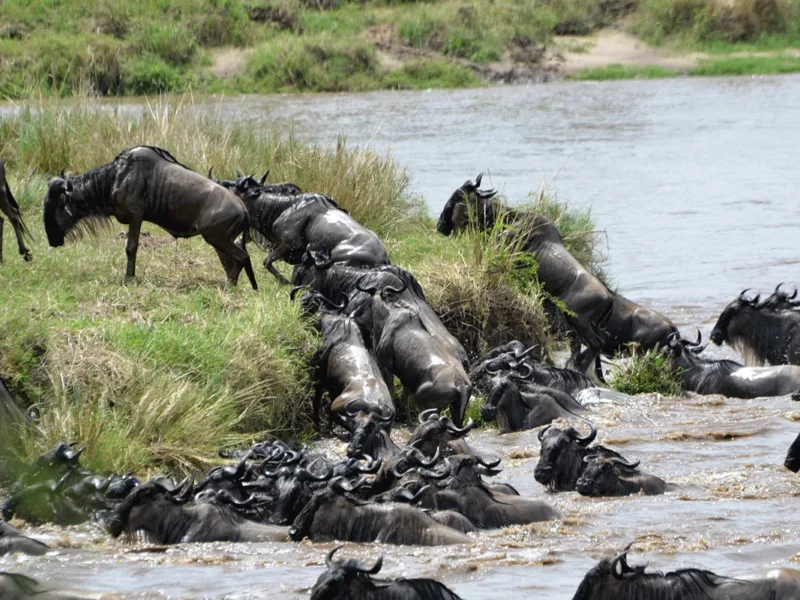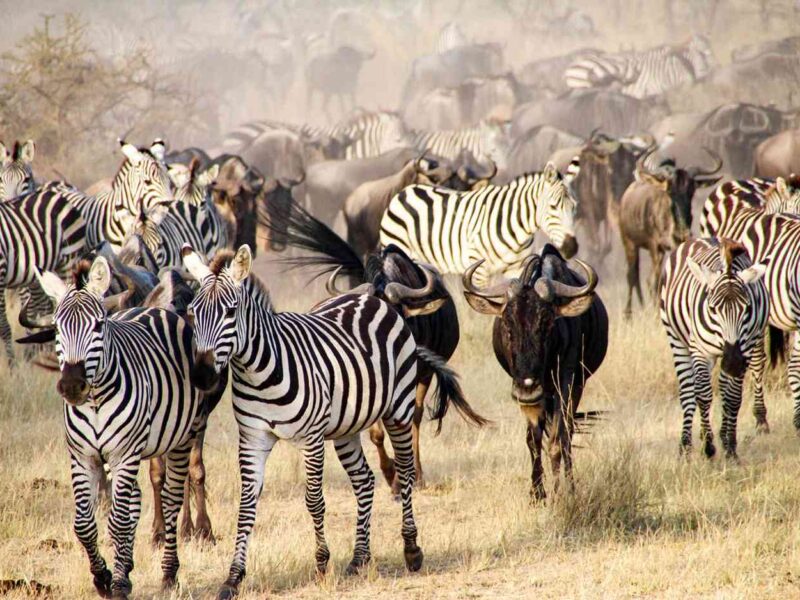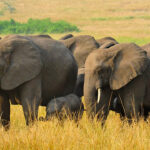
The Magic of the Big Five Safari
September 26, 2025The Natural Forest Medicine of Batwa
October 10, 2025The Mighty Leader and Symbol of Strength in Uganda Gorilla Families
Deep within the mist-covered rainforests of Bwindi Impenetrable Forest and Mgahinga Gorilla National Park lives the Mighty Leader and Symbol of Strength in Uganda Gorilla Families known as the Silverback.
This remarkable leader represents strength, wisdom, and unity within the gorilla family.
For travellers joining Uganda Gorilla Trekking safaris, meeting a Silverback face to face in his natural habitat is one of the most memorable moments in Africa.
His striking silver hair across the back, massive build, and calm confidence make him an extraordinary symbol of leadership in the animal kingdom.
The mighty leaders and symbol of strength is the Silverback, head of the gorilla family, which may include several females and their young.
Every member depends on him for protection, guidance, and stability.
The mighty leader and symbol of the strength in Uganda Gorilla Families decides where the group feeds, when to rest, and where to build nests for the night.
His presence gives the family a sense of safety and order.
During Uganda Gorilla Trekking, visitors often watch the Silverback lead his group through thick vines and forest paths, showing unmatched awareness of his environment.
Observing him reveals the true harmony of the forest, were strength blends perfectly with gentleness.
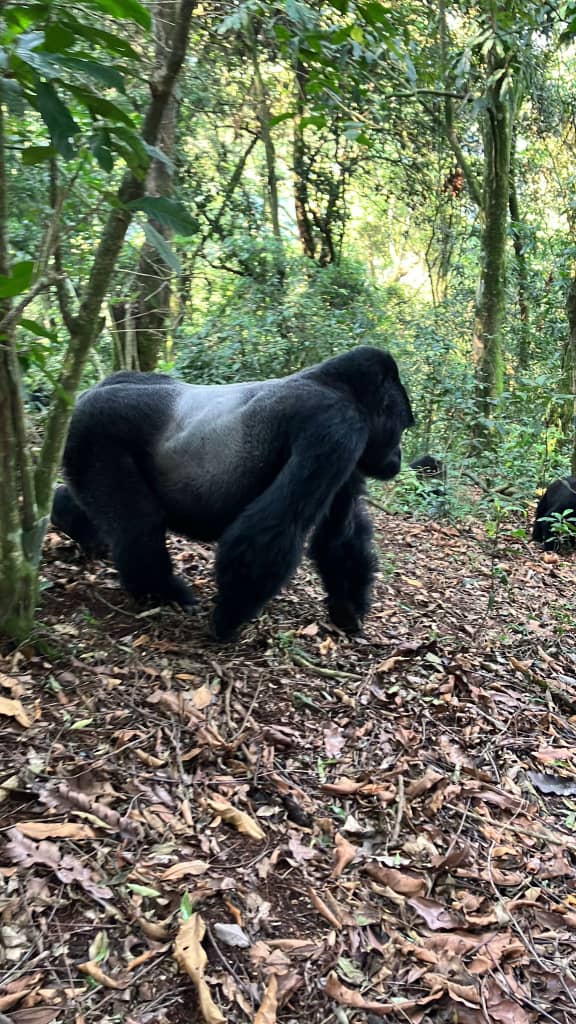
The Mighty Leader and Symbol of Strength
The Mighty Leader and Symbol of Strength in Uganda Gorilla Families (Silverback)
A gorilla family functions as a close and organized unit because of the Silverback’s firm and caring leadership.
He keeps peace among the females, watches over the young, and teaches the younger males the behaviour expected in the group.
When there is a disagreement or a threat, the Silverback steps in immediately. His deep chest beat, which echoes through the trees, is a message of authority.
It warns rivals and reassures his family that he is present and in control. Despite his power, the Silverback is a gentle protector. He shows affection by grooming others and playing with the infants.
Travellers on a Uganda Gorilla Safari often find this moment touching, especially when they see a young gorilla climb onto his back or sit quietly beside him.
The Silverback’s calm eyes and patience reflect true leadership. These scenes remind visitors that gorillas share many emotions and social behaviours similar to human families.
Each encounter is a lesson in nature’s intelligence and balance. The Silverback ensures the safety of his group while teaching cooperation and care.
Protecting him through conservation efforts means protecting the entire forest ecosystem.
That is why Ngeye Tours and Travel works closely with expert guides and park authorities to promote responsible tourism during Uganda Gorilla Trekking.
Visitors learn not just about the animals but also about the delicate harmony that allows both people and wildlife to thrive together.
The Batwa People and Their Cultural Connection to the Silverback
The Batwa people of Uganda have lived near gorillas for countless generations. Before the creation of Uganda’s national parks, the Batwa depended on the forest for everything.
They understood the gorillas’ behaviour deeply and developed a cultural connection to these great apes, especially the Silverback.
To the Batwa, the Silverback represented wisdom, courage, and guardianship. They saw him as a teacher and protector of the forest.
In Batwa oral traditions, the Silverback is not a distant creature but part of the forest family. His strength mirrors that of Batwa elders who guide their communities with care and discipline.
Just as the Silverback keeps peace among his troop, Batwa elders ensure harmony in their villages. This reflection of human and animal leadership forms a bridge between wildlife and culture.
Visitors who take part in Echuya Batwa organized by Ngeye Tours and Travel have the chance to learn about this deep respect.
During storytelling sessions, Batwa guides explain how the Silverback’s behaviours influenced their values of unity, discipline and respect for nature.
Their songs and dances often imitate the rhythm of the Silverback’s chest beat, celebrating his power as a guardian spirit of the forest.
This cultural insight helps travellers understand that conservation is not a new idea but part of the Batwa’s way of life for centuries.
Traveller Encounters with the Mighty Leader and Symbol of Strength and Batwa Culture
Travelers on Uganda Gorilla Trekking safaris often find the Silverback encounter to be the emotional heart of their journey.
The sight of a Silverback sitting calmly in the forest, surrounded by his family, creates an unforgettable image of strength and peace.
Guided by expert rangers, travellers learn about the gorilla family’s social structure and the Silverback’s critical role in maintaining balance.
After a thrilling morning of trekking, many visitors extend their experience by visiting Batwa communities around Bwindi or Mgahinga.
Here they hear stories that connect the Silverback to human understanding. The Batwa explain how observing gorillas taught them cooperation and patience.
In their songs and dances, travellers see the same sense of community that defines a gorilla troop.
These cultural experiences give meaning to the wildlife adventure, turning it into a journey of education and connection.
For travellers who wish to experience both nature and culture, combining Uganda Gorilla Trekking with a Batwa cultural visit offers a complete understanding of the region.
It reveals how wildlife and people have lived together for centuries and how tourism can support both conservation and community development.
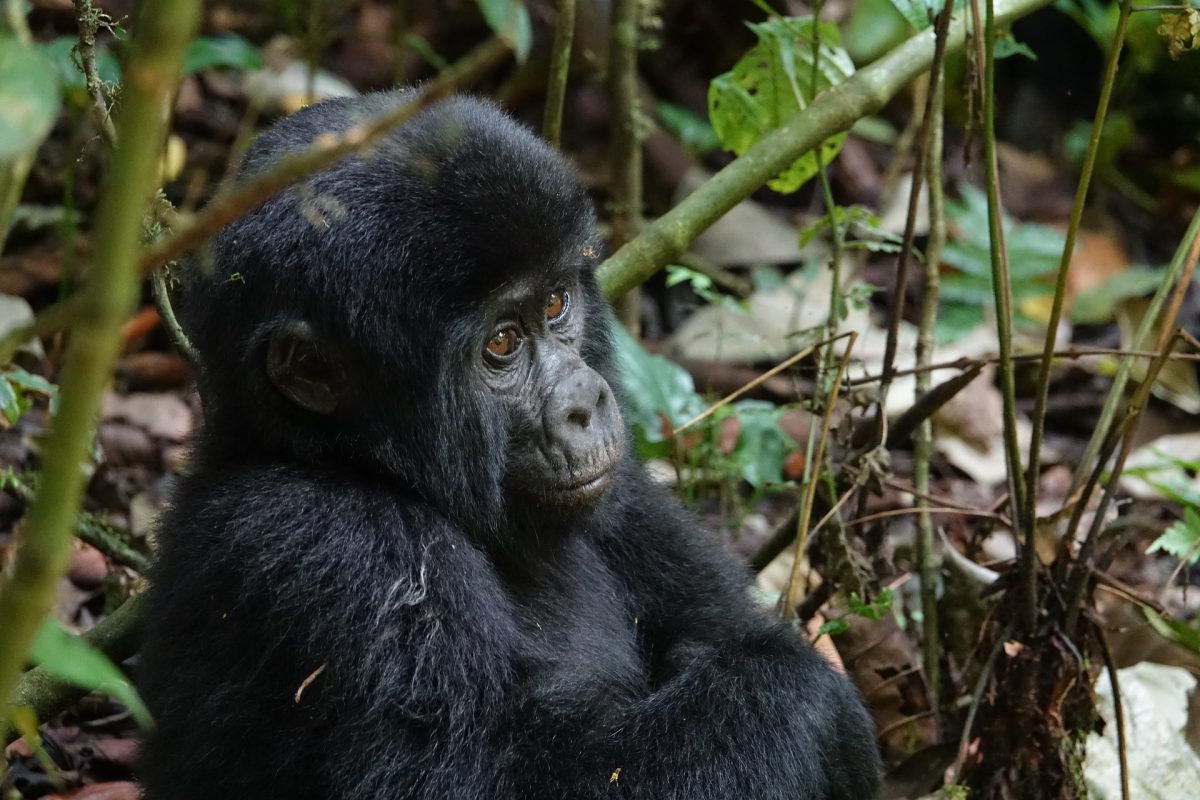
The Mighty Leader and Symbol of Strength
The Mighty Leader and Symbol of Strength (Silverback) also a Symbol of Conservation and Cultural Respect
The Silverback stands as a powerful reminder that true leadership protects rather than controls.
His existence depends on the safety of the forest, and his survival reflects the success of Uganda’s conservation efforts.
Through partnerships with local communities like the Batwa, organizations such as Ngeye Tours and Travel ensure that conservation includes both nature and people.
By choosing Uganda Gorilla Safaris that include community visits, travellers help preserve this balance.
Tourism revenue supports education, healthcare, and projects that empower the Batwa. In return, the Batwa share their cultural knowledge, enriching every visitor’s experience.
When travellers learn about the Batwa’s respect for the Silverback, they gain a deeper appreciation for Uganda’s natural heritage and its commitment to responsible tourism.
This shared respect creates a sustainable future for both gorillas and the people who live around them.
Every encounter with a Silverback during a Uganda Gorilla Safari becomes a lesson in coexistence.
His watchful eyes remind us that strength, wisdom, and care must work together if we want to protect our planet’s most remarkable creatures.
The Ultimate Experience: Walking with Wisdom in the Forest
Seeing a Silverback in his natural home is more than an ordinary safari experience. It is a moment of awakening that touches the heart of every traveller.
The Silverback moves with purpose, guiding his family through ancient trails lined with moss and vines. His quiet power and confidence reflect the spirit of the forest itself.
As travellers walk through Bwindi Impenetrable National Park or Mgahinga Gorilla National Park, guided by experienced trackers and Batwa storytellers, they realize that every sound and every shadow carries meaning.
The Silverback becomes not just a subject of admiration but a teacher. He reminds us that leadership comes from responsibility and compassion.
Combining this wildlife encounter with the Batwa cultural journey transforms an adventure into a meaningful story of life, balance, and survival.
With Ngeye Tours and Travel, every Uganda Gorilla Trekking safari becomes more than just a search for gorillas.
It becomes a reflection on unity between people and nature and a celebration of Africa’s enduring spirit


